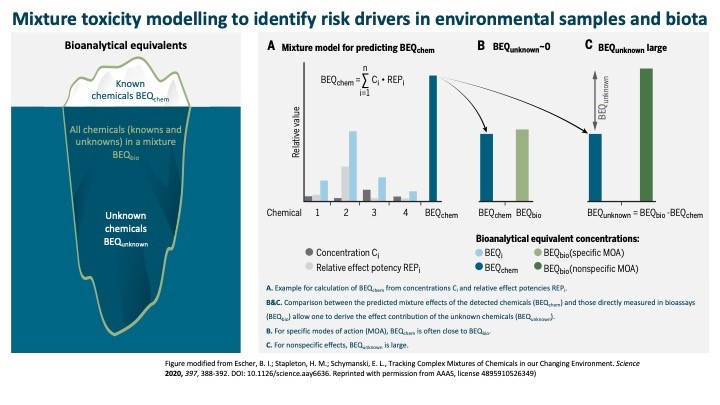Bioanalytical Tools for Monitoring and Assessment of complex mixtures

In vitro bioassays that respond to relevant initiating triggers in a cellular toxicity pathway and/or are linked to a known mode of toxic action with a defined health outcome have the potential to become useful tools for (bio)monitoring and risk assessment of chemicals.
We are using high-throughput screening based on robotic pipetting and incubation devices to increase the sample throughput and to facilitate fingerprinting of large numbers of chemicals, high diversity of samples as we as high spatial and temporal resolution in monitoring.
Cell-based bioassays allow us to evaluate mixtures of chemicals including unknowns and transformation products in pure form and in complex environmental samples (water, sediment, biota, etc.) and human samples (tissue, blood etc.).
By combining chemical analysis with mixture toxicity assessment and modelling, we can identify the tip and submerged part of the “iceberg”, i.e., which fraction of effect is caused by mixtures of known and which by unknown micropollutants. This will help us to prioritise chemicals and develop effect-based trigger values for bioassays. But the assays can also be used to investigate environmental processes or investigate the “fate” of complex mixtures in natural and engineered systems.
